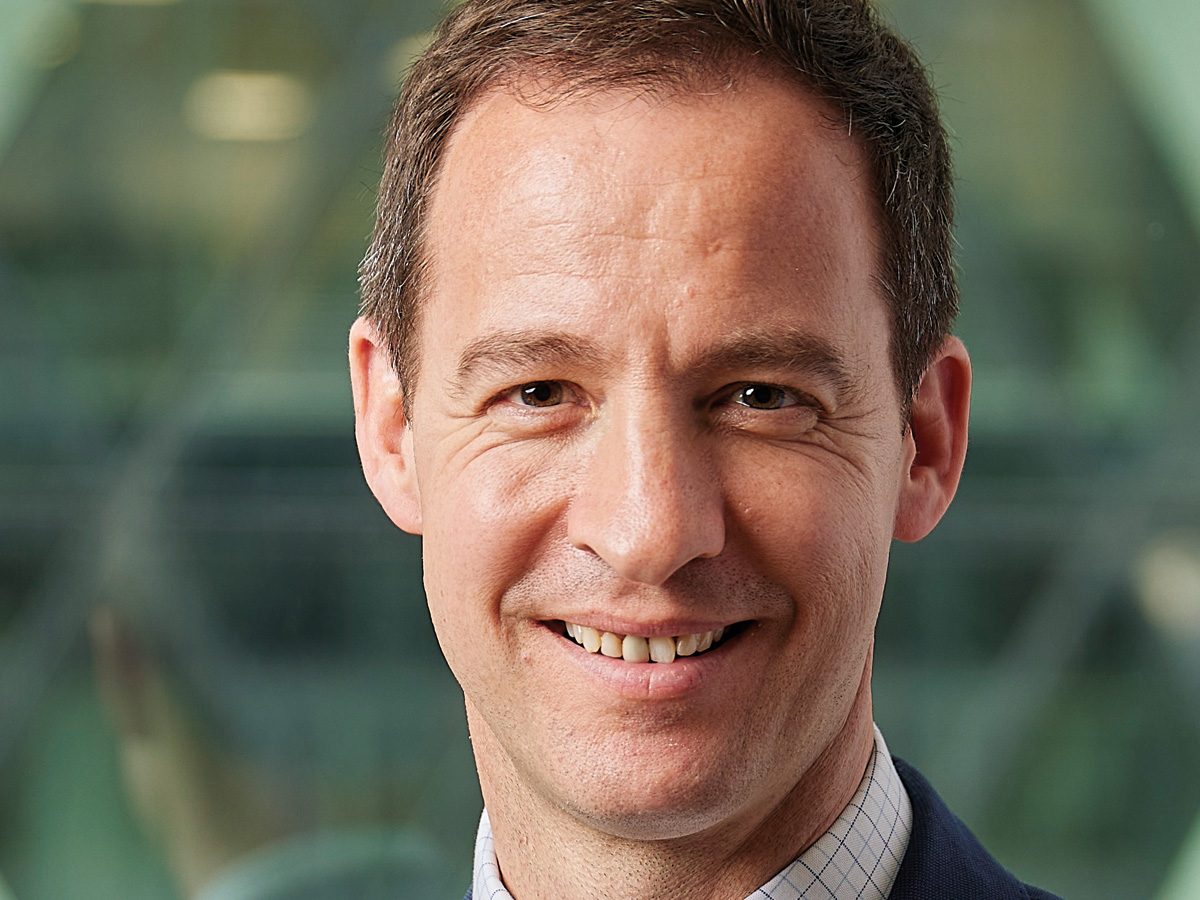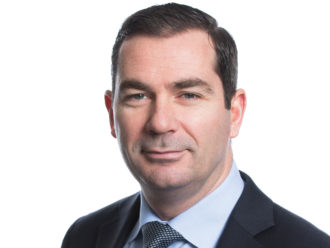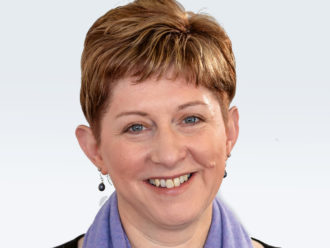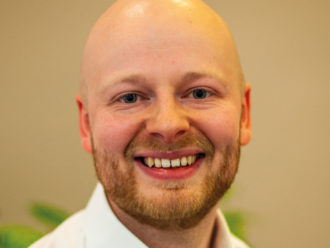How have your first five months in the role been?
It is going well. There has been a lot to do. The teams are great. I have enjoyed working with the trustees and Cardano, the in-house fund manager. As I have got to know the investment solution, it has exceeded my expectation. I love the flexibility the platform provides and the investment changes that were made just a few months before I joined. It is a great place to start from.
What have you identified as your priorities?
A key priority is how I work with Cardano. It is making sure that works successfully. Now Pensions relies on Cardano for ideas to build the master trust portfolio and implement that successfully.
My role here is to provide the investment expertise from a defined contribution (DC) master trust perspective. So understanding the market, what competitors are doing, understanding the solutions out there, understanding any outliers in our portfolio – and then contributing my own ideas.
Cardano has a great reputation as an investment manager and adviser for asset owners, but when it comes to the DC master trust portfolios I can challenge with my specific DC experience on behalf of Now Pensions, its trustees and the members.
So my priority is working together, building that relationship so I can challenge them, come up with my own ideas and we can develop the portfolio together. It has been a good start.
Has there been any difference of opinion or conflict?
Not really. For example, when I came in I wanted to understand where the scheme was on private markets, something that is hot on the agenda. There has been a lot of debate around that portfolio over the summer. But it has been more collaboration, rather than any conflict. We all bring different ideas to the table and it is coming to a clear vision. We intend to invest in private markets in 2025.
So having Cardano is a strong aspect of the investment working?
It is a good advantage to the master trust having an in-house fund manager. There is then a good alignment between the fund manager and the trustees and the trustees can have a greater influence on the portfolio.
Those portfolios managed by Cardano are segregated and separate, rather than pooled fund investments. If you have third-party fund managers, they manage those, but there is not the direct alignment that you have with an in-house fund manager.
How then does the relationship with Cardano differ from an outsourced chief investment officer arrangement?
Where it is slightly different is the separation of the two roles: I am not selecting and building my own in-house investment team or the investments. That is effectively the role of Cardano. I am the director of investment and have ultimate responsibility for the investment strategy proposed to the trustees and ensuring effective implementation.
Why have you made the move from being a consultant to being at the coal face as an investor?
My career at Mercer was quite varied and it wasn’t as simple as being a consultant. That is what I trained to be. But in 2014 I fully committed my career to the DC market. I was one of the leaders at Mercer that set up a UK DC business. I was a leader heavily involved in the evolution of the business into new areas like master trusts, rather than one that was just involved in consulting. So the move into this role is not as stark as it may first appear. As I have been specialising in DC for many years.
You touched on it, but what skills do you bring to your new role?
As well as my knowledge of the UK DC investment market, it is that passion for DC investment solutions and improving investment outcomes for the members. My role is not just about helping to create the solution with Cardano, it is also about going out and talking to the market – which I love doing. It is about good communication.
I have a deep experience in the market. At Mercer I spent 18 months in Australia and over two years in Latin America where there are some large and mature DC master trusts. I saw glimpses into the future for the UK master trust market.
So with that Australian experience, there is much discussion about Australian superfunds being the model for the UK. Do you agree?
There are lessons to learn in terms of what scale can achieve. The scale Australia has built in superfunds can allow the creation of better investment propositions.
One where you can make investments in the real economy and private markets and deliver better returns net of fees for members. So with consolidation of assets in the UK market you can do better things for members in terms of investment solutions.
At Now Pensions, we have the scale to begin making private markets investments and intend on making an investment to the asset class in 2025.
So you agree with Rachel Reeves, as she wants to create more scale within the pension fund industry.
There are two parts to what she says: the scale piece and then the greater investment into the UK economy. On the first, I believe it is the right way to go. And if you get to the scale, you are able to do the more interesting investments at better price points: invest in private markets, infrastructure, private equity and property. This should then increase long-term returns for members.
The trickier bit is whether those type of assets are invested in the UK, which is a separate question. That is a more complicated answer. Trustees have a fiduciary duty to select the right investments for the best outcomes and that may or may not mean investment in the UK.
However, you can understand why Rachel Reeves wants to use pension funds in these investments.
Going back to you, what has been the big- gest challenge in your new role?
It is linked to the priorities: making sure I understand our stakeholders. We have an experienced trustee board who are passionate about responsible investing and real world impact. So it is making sure I’m aligned to their views and policies. Like any master trust we have a lot of stakeholders to understand and manage appropriately.
You joined at a crucial time for the scheme: it has surpassed £4bn in assets under management and seen the introduction of a series of enhancements. What do you see as your most important responsibility?
It went up to more than £5bn in assets over the summer, so an exciting milestone. And because of the investment returns and contributions we could soon be hitting £6bn. The inflows are pretty large. With that size it is an interesting time. What I want to focus on is building upon the recent changes to the portfolio at the start of the year.
My responsibility is to make sure the asset allocation, and the strategy being designed, continues to be appropriate for the master trust market and our members. We want a high conviction portfolio for our members but to make sure we are not a massive outlier compared to our peers.
That is where my knowledge of the market comes in. But I want to know what others [in the market] are up to. Since our new strategy came in at the start of the year we have performed strongly. So it is my responsibility to help keep the good news coming.
How then would you sum up your investment philosophy?
The philosophy is we, and the trustees, have three ‘Rs’ that underpin our investments and are important to our members: return, risk and real-world impact.
In return and risk, this is obviously the concern for every master trust. How we think about it is we want to be heavily invested in growth-type assets to drive strong returns but still have diversification to have some protection in adverse market environments.
We are targeting inflation plus 3.5% over the long term. Most of our portfolio consists of equities: with a 75% allocation in listed equities managed by Cardano directly. We do want some diversifying assets in there, so we have 15% in bonds, that is sustainable bonds and investment-grade credit also managed by Cardano directly.
We also have 10% in alternatives: gold, industrial metals, carbon credits and high yield is another part implemented through derivatives. Some of the positions have gone extremely well this year.
The real-world influence is the piece that is the most exciting to me. It is also somewhat to do with the structure I mentioned at the start. As we have a segregated portfolio for global equity managed by an in-house manager, it allows the trustees to have more influence and have that real-world impact.
A key part of it is stewardship, where we use our role as a shareholder to influence the companies we invest in through engagement and voting, to improve the world we live in.
For example, for companies to reduce their carbon footprint in line with the net-zero by 2050 target and become more sustainable and address other social issues. So the trustees can have a real-world impact, creating a better society for our members and everyone else in the future.
But to have that without sacrificing our returns, indeed we believe that this focus reduces systematic risks and should help improve long-term returns.
This can mean, in some cases, removing stocks from the portfolio if we believe the companies aren’t adapting to a net-zero by 2050 target. But we would prefer to engage and influence – it is a powerful part of the portfolio, which makes a real-world difference.
What are your targets for net zero?
As is typical for a master trust, we are committed to net zero by 2050 and committed to 50% carbon reduction by 2030 based on 2019 levels. We also have other targets: net-zero deforestation by 2030, and water neutrality by 2030. So we have these clear goals but we want to achieve them whilst making a real-world impact.
We don’t want to simply decarbonise the portfolio, which we could do today, because that would not make a real-world impact. We want to move at a pace that aligns with the world’s e orts to reach net-zero by 2050, which is the Paris-alignment objective.
We will, however, disinvest stocks that do not have a credible plan for the journey to net-zero by 2050. Although what we prefer to do is that if organisations are carbon intensive today but they have a credible plan, we will support them through engagements with them and voting with them. We also collaborate with other investors on key engagement initiatives. And I believe it is making a difference for our members.
You also have a commitment to other ESG issues, specifically the living wage, gender equality and climate change. How do these translate into your investment approach?
This is part of our stewardship of the assets that are held directly and managed by Cardano.
Cardano is strong on stewardship, but it was the trustees who decided that we should focus on those three key areas on behalf of our members.
As a consequence Cardano will focus on those areas for engagement and voting and monitor them closely on behalf of the trustees. Overall, 75% of the portfolio has to align with the trustee’s responsible investment approach, and we are more than 75% in that measure.
Has the inflationary environment impacted on your investments?
It is an important measure given our target for the portfolio is inflation-plus 3.5%. So in a high inflation environment it means the target can be harder to achieve in the short term.
On the other hand, as the investment strategy has a high allocation to equities and our performance over the last 12 months, when inflation has been high, has been extremely strong, we have outperformed our inflation-linked target quite comfortably. Historically, equities have shown they are more than capable to outperform inflation over longer time periods.
Do you see the economic and geopolitical outlook shaping your investments?
We are seeing a lot of risks, especially geopolitical risk, and we have to keep an eye on that and see how it progresses. But at the same time we need to look through that noise.
Our central view is that we are seeing some stronger economic growth coming through and with interest rates coming down it is generally a positive environment for growth assets. And as a disciplined long-term investor, we try to avoid second guessing events that may or may not happen.
What are your objectives as director of investment over the coming years?
Looking at changes over the coming months, the private markets piece is going to be the most important, which is targeted at a 5% allocation, which is meaningful but not large. The allocation may increase over time.
My objective, generally, is to challenge Cardano if there is anything missing within the portfolio. For example, asset classes we should invest in or changes to the strategic allocation.
Over the longer term I want to make sure the three ‘Rs’ make a difference. The return part is important to member outcomes. I want to make sure, year-on-year, we are delivering consistently good returns for our members and we are the right pension provider for them.
And I love the trustees focus on real-world impact: I want to ensure we deliver on that too on behalf of our members over the long term.
What has been the biggest lessons of your career?
I have had a varied career and the biggest lesson I have learnt is to keep it exciting, maybe sometimes take a risk, and that has served me well.
MARTYN JAMES’ CV
April 2024 – present
Director of Investment
Now Pensions
October 2007 – October 2019 / November 2022 – December 2023
Senior investment consultant/partner in DC & Financial Wellness and Investments
Mercer
October 2019 – June 2022
Wealth (Pensions and Investments) leader LatAm
Mercer
January 2014 – October 2019
Client leader/leadership team in DC & Financial Wellness
Mercer
October 2007 – December 2013
London unit head/team leader
Mercer
January 2006 – July 2007
Consultant
Mercer (Australia)
July 2001 – December 2005
Analyst
Mercer





Comments